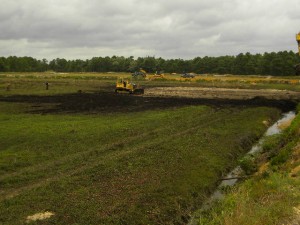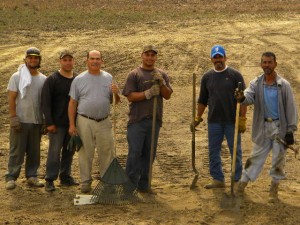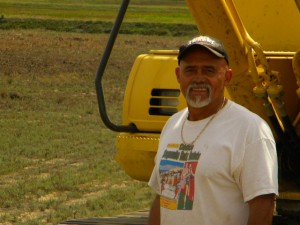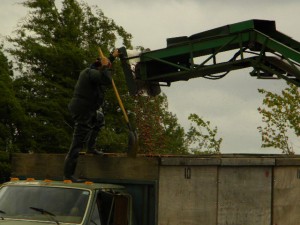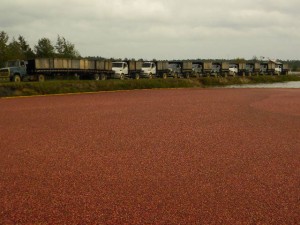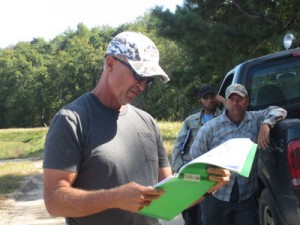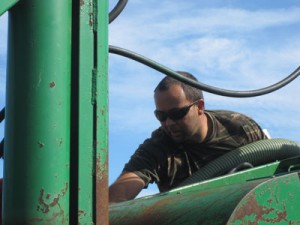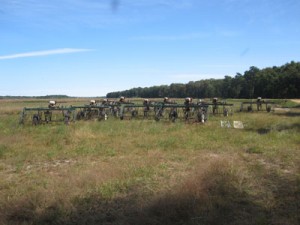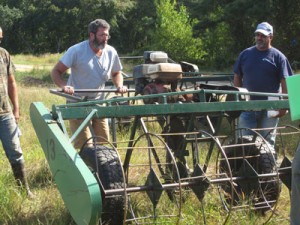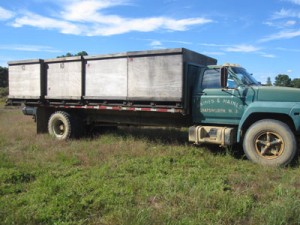Our team is still working hard on the post storm cleanup, and two of the bogs that were hardest hit (Otter and Fishhead) are back on track: the debris has been removed, the holes have been filled in, and the dams have been repaired. Also, the damage to the vines may not be as terminal as we feared. Next growing season will be a true test of their resiliency.
While harvest will not officially begin until Monday, the Pine Island team picked our first bog of the season on Tuesday. Ocean Spray’s Chatsworth Receiving Station wanted to test their new equipment, so we were able to help them and at the same time give ourselves an idea of how the flooding affected our crop. It worked out well for everyone.
Ocean Spray is placing particular emphasis on TAcy this year (as mentioned in our entry on varieties, TAcy is an acronym for “total anthocyanin concentration” and is a unit of color measurement used in a cranberry), so we chose Savannah #4, a bog planted with the Demoranville variety, which is specifically grown for early fruit color development and high TAcy in addition to size, quality, and vigor. This makes it a perfect control bog for all of the various extenuating circumstances.
After the bog was harvested, General Manager Fred Torres held a harvest meeting with the supervisors and foremen out at Savannah #4 to go over our expectations and priorities for the coming season. ICM manager Cristina Tassone brought up the emphasis on TAcy this season; we want to place higher priority on harvesting the bogs that were under water the longest period of time, and at the same time test the TAcy to ensure we have the color.
Harvest is what we spend all year working toward. We focus on efficiency, quality, and growth, which will be measured by size, color, brix, and soundness. We never stop striving for quality fruit until the last bog is harvested. The proof is in the way our team responded after the storm to get us to harvest on time. This is what we do and who we are.
Fred emphasized in the meeting that establishing a chain of command is important, and above all, communication is key. Our supervisors need to be able to communicate to both their crew and to management what their daily plan is and be able to deal with anything that goes wrong…and something will always go wrong. Machines will break, a truck won’t start, a boom reel will get stuck: any number of things can happen, and that’s why communication and teamwork are so important. Fred continues, “Communication and teamwork are what makes us efficient and that’s how we get things done. We don’t want to be wasting time at harvest.” Our supervisors are also instructed to take care of the water every day; they need to have the bogs flooded and ready to go at the start of the work day, whatever it takes. It is crucial to keep the lines of communication open between the the people in the bogs and the people in the packing house, so that the packing house can keep the Receiving Station apprised of any changes.
The harvest meeting also included a reminder from Louis Cantafio to review the maintenance of the harvesting machines. Louis and his crew ran everything prior to Wednesday to make sure all was in order. He wanted to ensure everyone paid attention to the tension on the chains: too-tight chains on the harvesters is too much work for the engine; it will wear out the chain and the sprockets and then will need to be replaced between seasons, which gets expensive.
All in all, we had a challenging two weeks to get to this point: prepared for harvest. Communication and continued training is key to keep us on our mission. One thing Bill has always liked about farming is that when it’s time to do something, you do it, and our team proved we will do whatever it takes to get there.

